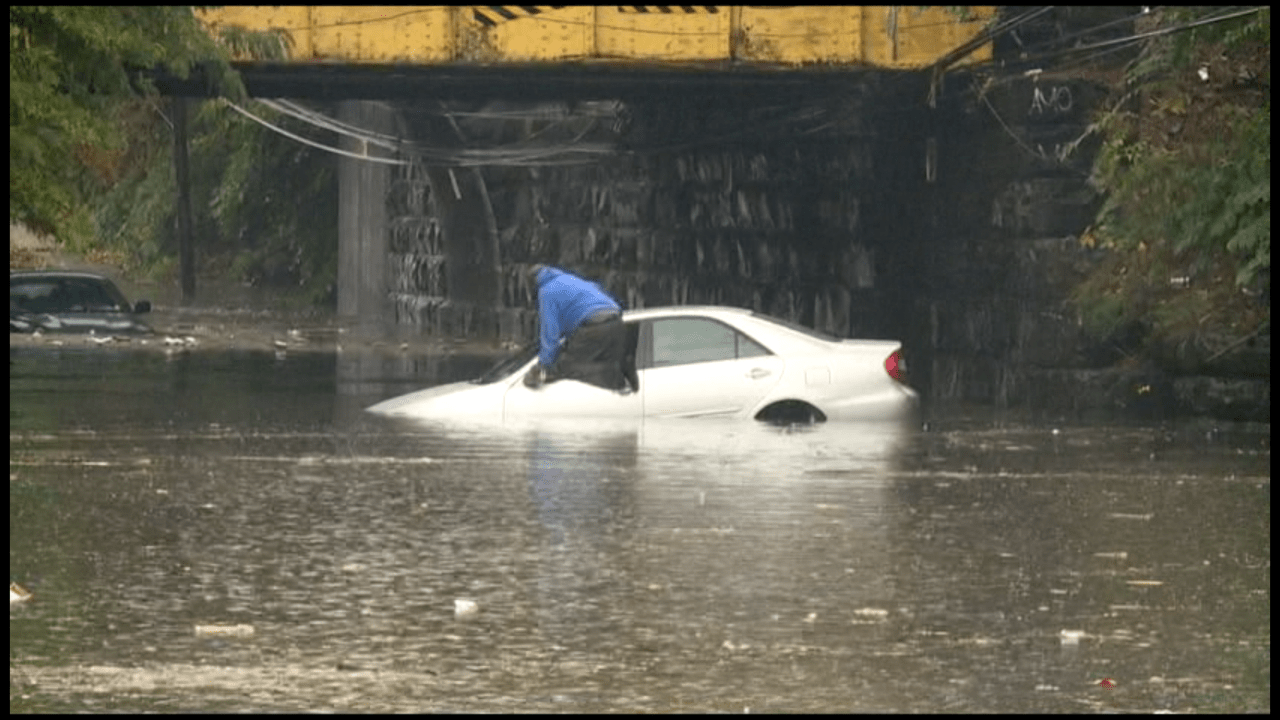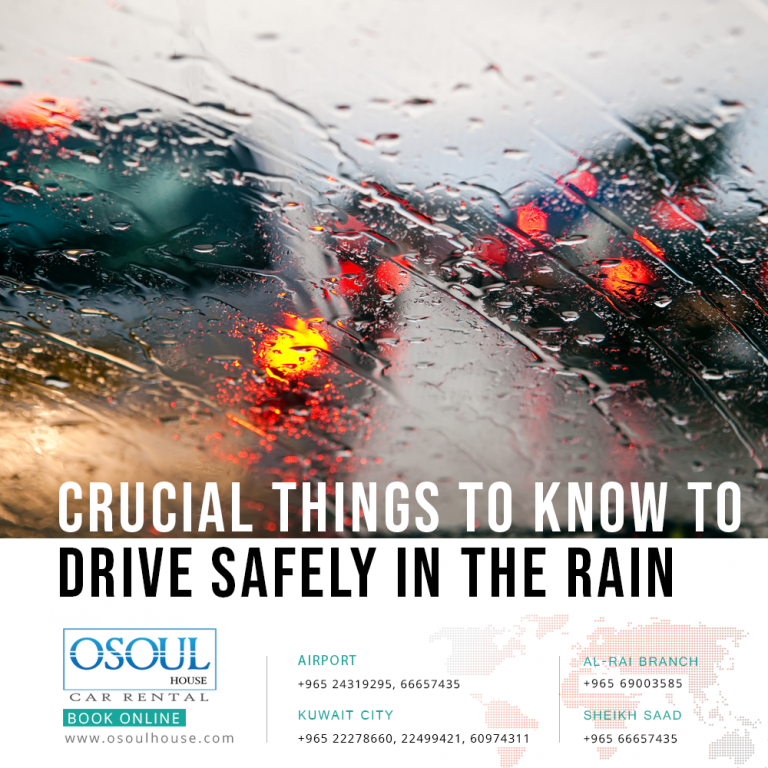
Refer to your vehicle manufacturer's guidelines regarding optimal pressure for your tires.

Tire pressure should be checked at least once a month. Regularly check your tires for proper tread depth and tire inflation. It's always preferable to pull over if weather conditions prevent you from seeing other vehicles or the road. Turn on your hazard lights and wait for weather conditions to improve. Make sure your car is visible to both oncoming and incoming traffic. If you aren't confident in your ability to continue driving in present road conditions, find a safe place to pull over. Carefully avoid large puddles or change lanes when possible. Even a few inches fast moving water can lift your car and carry it away. Be sure to avoid water that appears to have a current. Pools of water can hide potholes or mud that can damage or immobilize your vehicle. Don't drive through flooded areas or standing water. Watch out for splashes from large puddles as they could obstruct your vision. Pay attention to the conditions of the road. As a precaution, leave about three to five car lengths of space between you and the vehicle in front of you. It is impossible to predict what other drivers will do, especially in poor weather conditions. This will give you both space and time to react to sudden changes on the road. Increase the distance between you and the vehicles in front of you. Until then, focus on staying calm and keeping the steering wheel steady. It will be apparent when your vehicle stops hydroplaning. Lastly, wait for your tires to gain traction on the road again. Avoid sharp turns and oversteering as the momentum may cause your car to spin. Hold the steering wheel steady and keep the car pointed forward or in the direction of the road.

Don't use your brakes when hydroplaning as sudden braking can cause your car to skid. First, keep calm and slowly lift your foot off the gas pedal. However, there are ways to recover if your car begins to hydroplane. Losing control of your vehicle can be terrifying. Avoid hard braking and sharp turns to ensure your tires maintain contact with the road. Car tires can lose traction with the road at speeds as low as 35 mph or in as little as a ½ inch of water. Slowing down will prevent your car from hydroplaning and will help reduce the possibility of skidding. Roads are most dangerous shortly after it begins to rain as dirt and grime will mix with oils from the asphalt and create slicker driving conditions.

Proper communication with other drivers helps to maintain safety on the road, especially during a heavy rainfall. Always use your turning signal before changing lanes or making turns. Driving with your headlights on will help you see the road and helps other drivers see your vehicle. Many states require you drive with your headlights on while it rains, even during the day. During heavy rain or storms, turn off all distractions such as cell phones or the radio and focus on the road. Keep both hands on the wheel at all times. To stay alert while driving is particularly important in situations when your vision is partially obstructed, so be cautious and stay calm while driving in the rain.


 0 kommentar(er)
0 kommentar(er)
